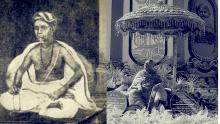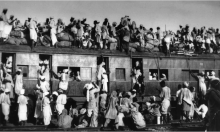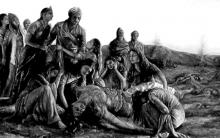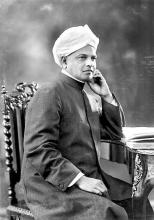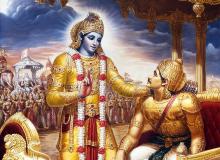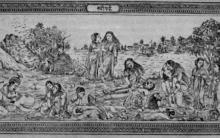When the world-renowned scholar, India-aficionado, and multifaceted expert on various art forms, Ananda Coomaraswamy was asked to deliver a message regarding India’s independence, this is the note he wrote from America: “Be yourselves. Tread on the path showed by Mahatma Gandhi, Kumarappa, D.V. Gundappa and Ramana Maharshi.”
Author:prekshaa
ಪುರುಷಾರ್ಥಜಿಜ್ಞಾಸೆ
ಇಲ್ಲಿಯ ಸಂದೇಶದ ಅಂಶಗಳು ಗ್ರಂಥದುದ್ದಕ್ಕೂ ಅಲ್ಲಲ್ಲಿ ಬಂದಿರುವಂತಹವೇ ಆಗಿವೆ. ಮುಖ್ಯವಾದ ಸಂದೇಶ – ಜಗತ್ತಿನಲ್ಲಿ ಪ್ರಾಥಮ್ಯಕ್ಕೆ ಅರ್ಹವಾದ ತತ್ತ್ವವೆಂದರೆ ಧರ್ಮವು ಮಾತ್ರವೆಂಬುದು; ಧರ್ಮವು ಮಾತ್ರ ಅಂತಿಮವಾಗಿ ಜಗತ್ತಿನ ಸಂಸ್ಥಿತಿಗೂ ಸಂಕ್ಷೇಮಕ್ಕೂ ಕಾರಣವಾಗಬಲ್ಲದು – ಎಂಬುದು. ಸಾಮಾನ್ಯವಾಗಿ ವ್ಯಾವಹಾರಿಕ ಜೀವನದ ಸ್ತರದಲ್ಲಿ ಜನರ ಹೆಚ್ಚಿನ ಲಕ್ಷ್ಯವನ್ನು ಸೆಳೆಯುವವು ಅರ್ಥ ಮತ್ತು ಕಾಮಗಳೇ ಆದರೂ, ಭೌತಸಮೃದ್ಧಿ ಮತ್ತು ಕಾಮಪೂರಣಗಳೆಂಬ ಪುರುಷಾರ್ಥಗಳನ್ನೂ ಧರ್ಮವೇ ಸಾಧಿಸಿಕೊಡಬಲ್ಲದು – ಎಂದು ವ್ಯಾಸರು ಹೇಳಿರುವುದನ್ನು ಗಮನಿಸಬೇಕು.
Public Organisations
The public meeting that took place towards the end of 1919 was organized by D.V.G. In the South Indian Princely States Conference held in 1929 in Travancore, D.V.G was the secretary to its president, Sir M. Visvesvaraya.
In the People’s Conference of South Indian States held in May 1925 in Pune, in the All India States People’s Representative Conference held in December 1927 in Mumbai, and on numerous such occasions, D.V.G’s opinions were sought and discussed.
Dharmarāja walked past all the women who were shouting at him, went to the old king Dhṛtarāṣṭra, and bowed down to him. The others too called out their own names and saluted the king. Dhṛtarāṣṭra embraced Dharmarāja without any affection. He asked, “Where is Bhīmasena?” His anger was getting invigorated by winds of rage and it seemed as though he would burn Bhīma to death. Kṛṣṇa, who knew Dhṛtarāṣṭra’s heart, was already prepared for such a situation. He pulled Bhīma back and pushed an iron image of Bhīma towards the king.
In 1931, Lakṣmīnarasiṃha Śāstri joined the Pāṭhaśālā in this Maṭha for higher studies. He was then eighteen years of age. The background of this Pāṭhaśālā requires mention.
शुद्धाद्वैतपथस्य पालनकृते पूर्वं त्वया स्थापित-
स्थानेष्वन्यतमस्थशिष्यततिगस्तत्कार्यकृत्यक्षमः।
अज्ञानां धुरि कीर्तनीयचरितो नाद्यापि विद्यालय-
स्तस्मात्स्थानमिदं गुरूत्तम कृपावार्धे त्वमेवाश्रय॥
यद्वा दुर्मतभेदपाटववतीं मेधां नवोन्मेषिणीं
Magadi Karanika Krishnamurthy is worthy of remembrance. He had a mind that was liberal, a heart that was generous, and an outlook that was progressive. The reward the world gave him was—to some extent—admiration and a bit of ridicule.
The Rule of the Maharajas
The situation in the states ruled by the Maharajas were not really praiseworthy.
Bhopal was a Hindu-majority state as long as it was under the suzerainty of the Gonds – until Mohammad Khan captured it. By the beginning of the 20th century, the situation had declined so badly that not even one percent of key administrative posts was in the hands of Hindus.
ಪರಂಪರೆಯ ಚಿರಂಜೀವಿಗಳ ಪಂಕ್ತಿಯಲ್ಲಿ ಸ್ಥಾನ ಪಡೆದುಕೊಂಡಿರುವ ಭಗವಾನ್ ವೇದವ್ಯಾಸರು ದ್ವಾಪರಯುಗದ ಪ್ರಮುಖ ಘಟನಾವಳಿಗಳನ್ನು ಜಗತ್ತಿನಲ್ಲಿಯೇ ಅತ್ಯಂತ ಮಹತ್ತ್ವದ್ದೂ ಅತ್ಯಂತ ವಿಸ್ತಾರವಾದದ್ದೂ ಆದ ಅನನ್ಯ ಇತಿಹಾಸಗ್ರಂಥವಾಗಿರುವ ಮಹಾಭಾರತದ ರಚಯಿತರು ಮಾತ್ರವಲ್ಲದೆ ಮಹಾಭಾರತದ ಪ್ರಮುಖ ಪಾತ್ರಧಾರಿಯೂ ಆದವರು. ಒಂದು ದೀರ್ಘಯುಗದ ಆಗುಹೋಗುಗಳ ಕಥನ, ನೇರ ಬೋಧನೆಯ ಮೂಲಕವೂ ಪ್ರೇರಣಾದಾಯಕ ಉಪಾಖ್ಯಾನಗಳ ಮೂಲಕವೂ ಸಾರ್ವಕಾಲಿಕ ಮೌಲ್ಯಗಳ ಪ್ರತಿಪಾದನೆ – ಇವು ಮಹಾಭಾರತವನ್ನು ಅತುಲ್ಯವಾಗಿಸಿವೆ. ಮೊದಲಿನಿಂದ ಕಡೆಯವರೆಗೆ ಹೆಜ್ಜೆಹೆಜ್ಜೆಗೂ ಮಾನವಸ್ವಭಾವಸ್ವರೂಪಚಿತ್ರಣವನ್ನೂ ವಿಶ್ಲೇಷಣೆಯನ್ನೂ ಒಳಗೊಂಡಿರುವ ಅಗಾಧ ಜ್ಞಾನರಾಶಿ ಮಹಾಭಾರತ. ಮಹಾಭಾರತವು ‘ಕಾರ್ಷ್ಣವೇದ.’ ಇದು ಐದನೆಯ ವೇದ ಎಂಬ ಭವಿಷ್ಯಪುರಾಣದ ಹೇಳಿಕೆಯೂ ಪ್ರಸಿದ್ಧವಾಗಿದೆ.

